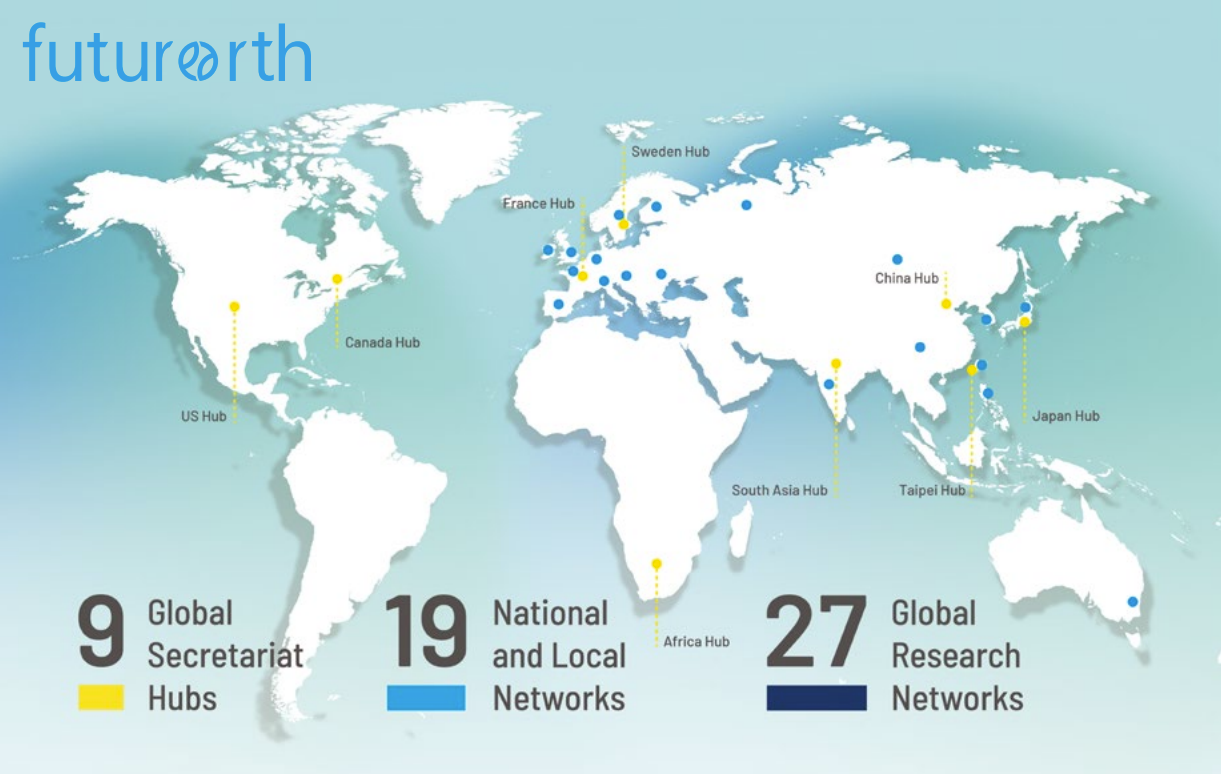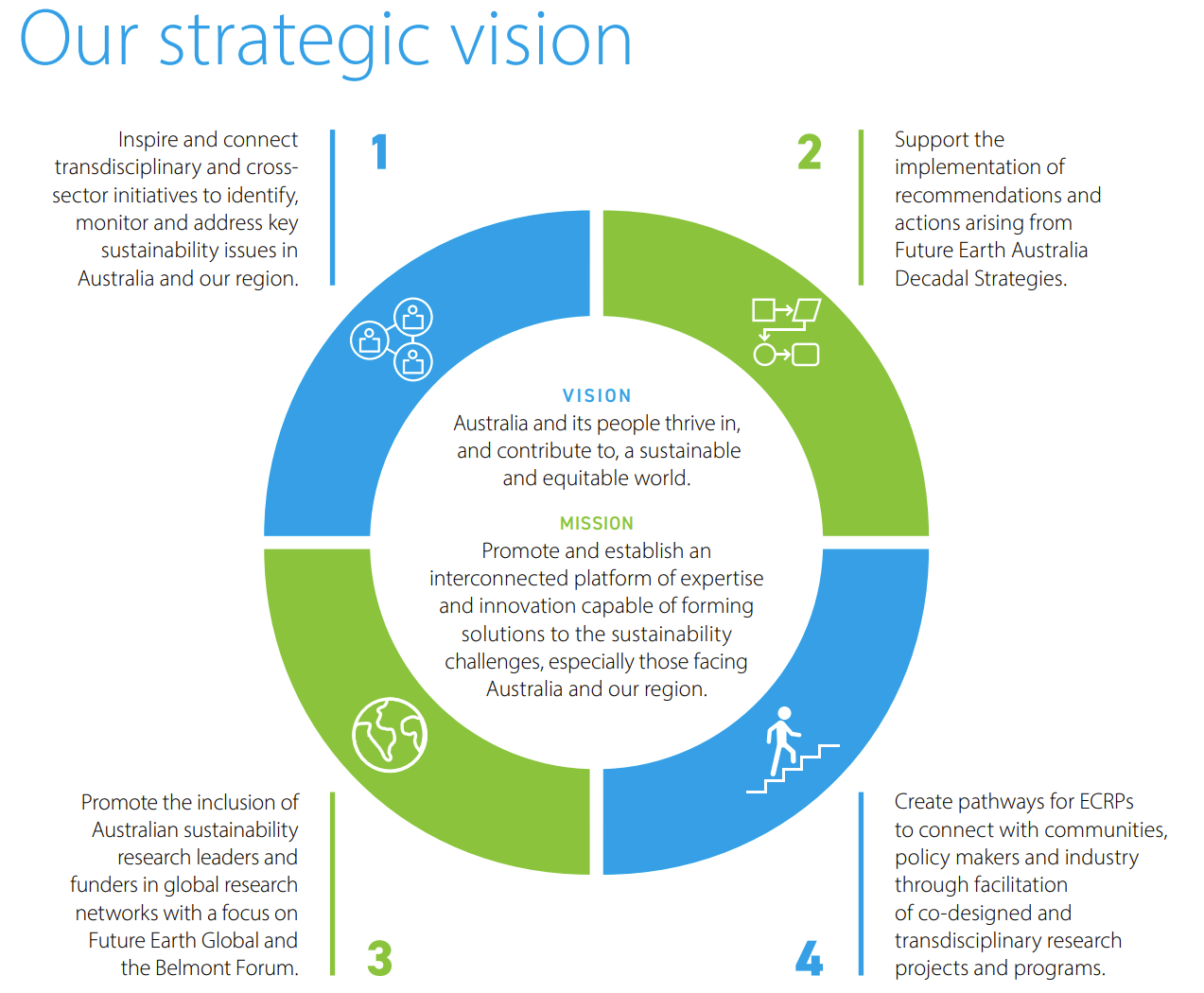History of Future Earth
Future Earth was officially announced in June 2012 at the UN Conference on Sustainable Development (Rio+20), to be created as a global initiative to strengthen the interface between policy and science. Future Earth became fully operational with a permanent Secretariat at the end of 2015.
Future Earth currently has 9 global secretariat hubs, 20 national and local networks (including FEA) and 27 global research networks. Over 140 Australian researchers are engaged in Future Earth networks across the globe.
Future Earth is working towards a sustainable global future by developing a deeper understanding of complex Earth systems and human dynamics across disciplines. Future Earth looks closely at the interconnectedness of Earth’s major systems–climate, water, land, ocean, urban, economic, energy, health, biodiversity, and governance systems–and developing evidence-based strategies for global sustainable development.

History of Future Earth Australia
Future Earth Australia (FEA) was established in 2016 with the help of the Australian Council for Learned Academies (ACOLA), hosted at the Australian Academy of Science (AAS). It is a partnership of Australian universities, research institutes and industry, government and civil society working to advance sustainability.
As part of the Future Earth Asia regional committee, we support the activities of Future Earth internationally.
Our foundation members include CSIRO, Sydney University and the Australian National University. Since then, we have expanded to 8 university and research institution members.
In 2023, FEA transitioned from being embedded in Science Policy in the Australian Academy of Science, to the National Committees for Science. This recognises our role as knowledge brokers with the international Future Earth community and as trusted advisors within the Academy.
Our Purpose
The Anthropocene has threatened the world with many challenges due to human-induced climate change. Understanding environmental phenomena and developing effective solutions requires a transdisciplinary approach to physical, economic and social factors. This approach is encompassed by the wholistic implementation of the UN Sustainable Development Goals.
Future Earth Australia was formed to facilitate collaborative approaches that recognise and challenge barriers to sustainability. We are uniquely identified by our collaboration between researchers, policymakers, government and international bodies.
Future Earth Australia aims to move Australia towards embedding its research capacity into global research initiatives. We aspire to mobilise Australia’s comparative advantages in research towards addressing and implementing the Sustainable Development Goals.
